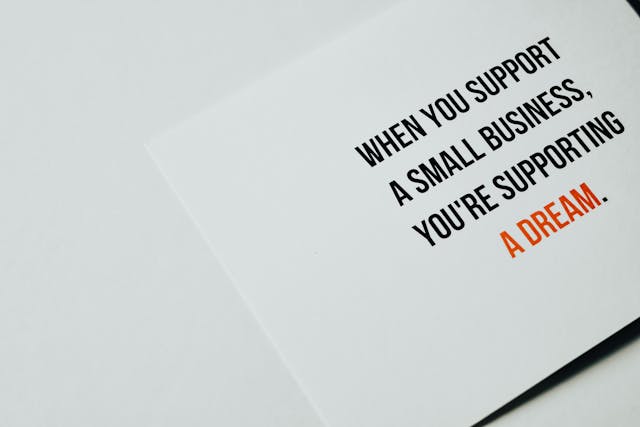A well-designed business card can be more than just a piece of paper with your name on it—it’s a powerful marketing tool. In property management, the right business card can leave a lasting impression on potential clients, contractors, and tenants. It’s the small but mighty detail that can set you apart from the competition.
Here’s a breakdown of the must-have elements for creating a property management business card that not only looks good but also works hard to drive new business.
1. Your Name and Title
This might seem obvious, but your name and title are the first things people will look for. However, it’s not just about having your name on the card—it’s about making it clear what you do. If you’re the property manager, say so. If you own a property management company, include your title as “Owner” or “CEO.”
Make sure it’s easy to read and positioned where it stands out. Avoid using complex fonts that are hard to read at a glance. Instead, go for a clean and professional look.
2. Company Name and Logo
Your company’s name should be prominent on the card, ideally near the top. If you’ve invested in a company logo, make sure it’s included and high-resolution. The logo builds brand recognition, and over time, people will associate it with your services.
If you don’t have a logo yet, consider creating one. Even a simple logo can give your business a more professional and established look.
3. Contact Information
The goal of a business card is to make it easy for people to contact you. Include multiple ways to reach you, but don’t overwhelm the card with too much information. Stick to the essentials:

- Phone Number: Use the number where you’re most easily reached. If you have a dedicated business line, include that.
- Email Address: A professional email address using your domain name (e.g., you@yourcompany.com) builds trust. Avoid personal email addresses like Gmail or Yahoo for business purposes.
- Website: Potential clients will likely want to check out your website to learn more about your services. Make sure it’s clearly displayed.
Some property managers also include their office address, but it’s optional, especially if you work remotely or don’t have a physical office.
4. Social Media Handles or QR Code
Many potential tenants and clients will check out your social media profiles to get a sense of how you manage properties. If you’re active on social platforms like LinkedIn, Facebook, or Instagram, consider adding your handles. It shows you’re accessible and gives people another way to connect with you.
You could also include a QR code that links directly to your website or portfolio. This is a modern touch that adds convenience for tech-savvy prospects. Scanning a QR code is much faster than typing in a URL.
5. Tagline or Key Service Offering
Your business card should quickly communicate what you do. A short tagline or a few words about your services can help reinforce your expertise. For example, “Residential and Commercial Property Management” or “Specializing in Multifamily Units” gives people an instant understanding of your focus.
This tagline should be brief and to the point. You want it to be memorable without taking up too much space on the card.
6. Design That Reflects Your Brand
Your business card is a reflection of your brand. The design, colors, and fonts you choose should align with the image you want to project. If your property management company focuses on luxury homes, the card should have an elegant, high-end feel. For a company specializing in commercial properties, a more corporate, sleek design would be appropriate.
Color is also an important element. It’s tempting to go with bold, flashy colors to stand out, but subtle, professional tones often leave a stronger impression. Use your brand’s color palette to create consistency across your marketing materials.
Make sure your card isn’t cluttered. White space is your friend. A clean, well-spaced card is easier to read and looks more professional.
7. High-Quality Material
A flimsy, low-quality card can hurt your brand. Opt for thick, high-quality cardstock that feels substantial in hand. A heavier card signals professionalism and reliability, which are key traits in property management.
Consider a matte or glossy finish for added durability. Matte is great for a modern, understated look, while gloss can make colors pop and add a premium feel. Both options are durable and leave a lasting impression when you hand them out.
8. Double-Sided Card
The back of your business card is valuable real estate. Use it! You can add something useful on the reverse side, like a QR code, a list of services, or a short, memorable message.

Some property managers use the back to add a map to their office location or even a quote that reflects their management philosophy. Just avoid cluttering it up with too much text—keep it clean and simple, but don’t let that space go to waste.
9. Consistency Across Marketing Materials
Your business card shouldn’t stand alone. It should align with the design of your website, social media pages, and any other marketing materials you use. This consistency builds brand recognition and makes you look more professional. If someone sees your card, visits your website, and notices the same colors and logo, it reinforces the idea that your business is established and trustworthy.
10. Clear Call to Action
While not as common, a business card can include a subtle call to action (CTA). For example, a line like “Contact me for a free consultation” or “Visit our website for current listings” can prompt the person receiving your card to take the next step.
Make sure any CTA you include is actionable and specific. Vague statements won’t generate as much interest as something clear and direct.
Your business card is often the first point of contact between you and a potential client, tenant, or partner. A well-designed card that’s easy to read and clearly communicates who you are and what you do can be a powerful marketing tool in your property management arsenal. It doesn’t need to be flashy, but it does need to be professional, easy to navigate, and aligned with your brand.
